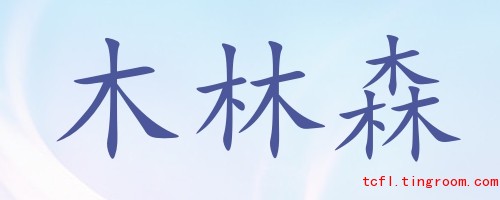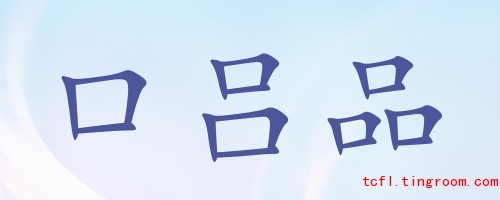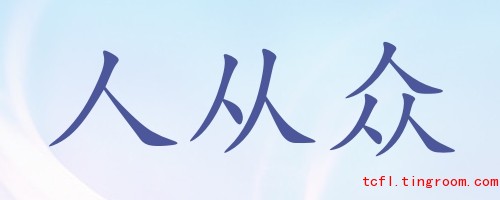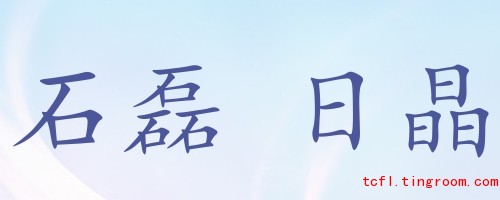In this post I’d like to stack up some character legos with you and hopefully you’ll learn a few new characters after this fun exercise.

The first lego piece we’ll use is 木 mù (wood), which takes the shape of a tree. If we plant two 木 mù together, we got a bush 林 lín. If we add one more 木 mù to the mix, then we got the forest 森 sēn! As a matter of fact, the word 森林 sēnlín exactly means “forest” – see how many trees we have in that combination?

That one is probably a well-known example that is easy to remember. Now we move on to the next lego piece: 口 kǒu (mouth). If you put two two pieces together, it become 吕lǚ, which is mostly used for last name. What about you stack three of them all together? Then you’ll get a character like this: 品 pǐn, which means “quality”. But why? Well, if so many people are talking (with their mouth) about a thing or a person in a good way, then the “quality” is guaranteed, isn’t it?

I’m not sure if it happens to other culture that people like to use “rock” to symbolize a man. In Chinese, because of that, character 石 shí (stone), when we stack up three pieces of it, becomes 磊 lěi, which means “open and upright”. That’s the desired image of a man in Chinese culture. That meaning is getting more explicit in idiom 光明磊落 guāngmínglěiluò (straightforward and upright). People also like to use 磊 lěi as a boy’s first name.
Now let’s use another element character 日 rì (sun) to do our stacking game. Wait a minute, what is the most dominant characteristics of the sun? “Shining!” Of course! What if we stack three suns together like this: 晶 jīng? Doesn’t it remind you of a sparkling diamond that reflects various colors of light? Here is an example using this character: 亮晶晶 liàng jīngjīng (shining and sparkling).

There are still more element characters that can be used to stack “monster” characters, such as 水 shuǐ to 淼 miǎo, 金 jīn to 鑫 xīn etc.
Do you know any character of this kind? Feel free to share them here, thanks!
Good night, my friends!
Update: The following are probably all the “monster characters” of this kind in Chinese. Most of them are obsolete. only a few are still used in traditional Chinese or Japanese. (“卉” is used in simplified Chinese too.) I highlighted the ones that I can recognize by myself (with simplified Chinese background). only four :-(.
垚 焱 靐 卉 芔 轟 畾 厽 馫 飍 灥 厵 犇 猋 赑 贔 蟲 麤 毳 龘 骉 驫 羴 雥 鱻 矗 姦 舙 瞐 聶 掱 叒 惢 譶 劦 壵 孨 歮 晿 飝 刕 尛 嚞 皛 雦
 English
English Japanese
Japanese Korean
Korean French
French German
German Spanish
Spanish Italian
Italian Arab
Arab Portuguese
Portuguese Vietnamese
Vietnamese Russian
Russian Finnish
Finnish Thai
Thai dk
dk